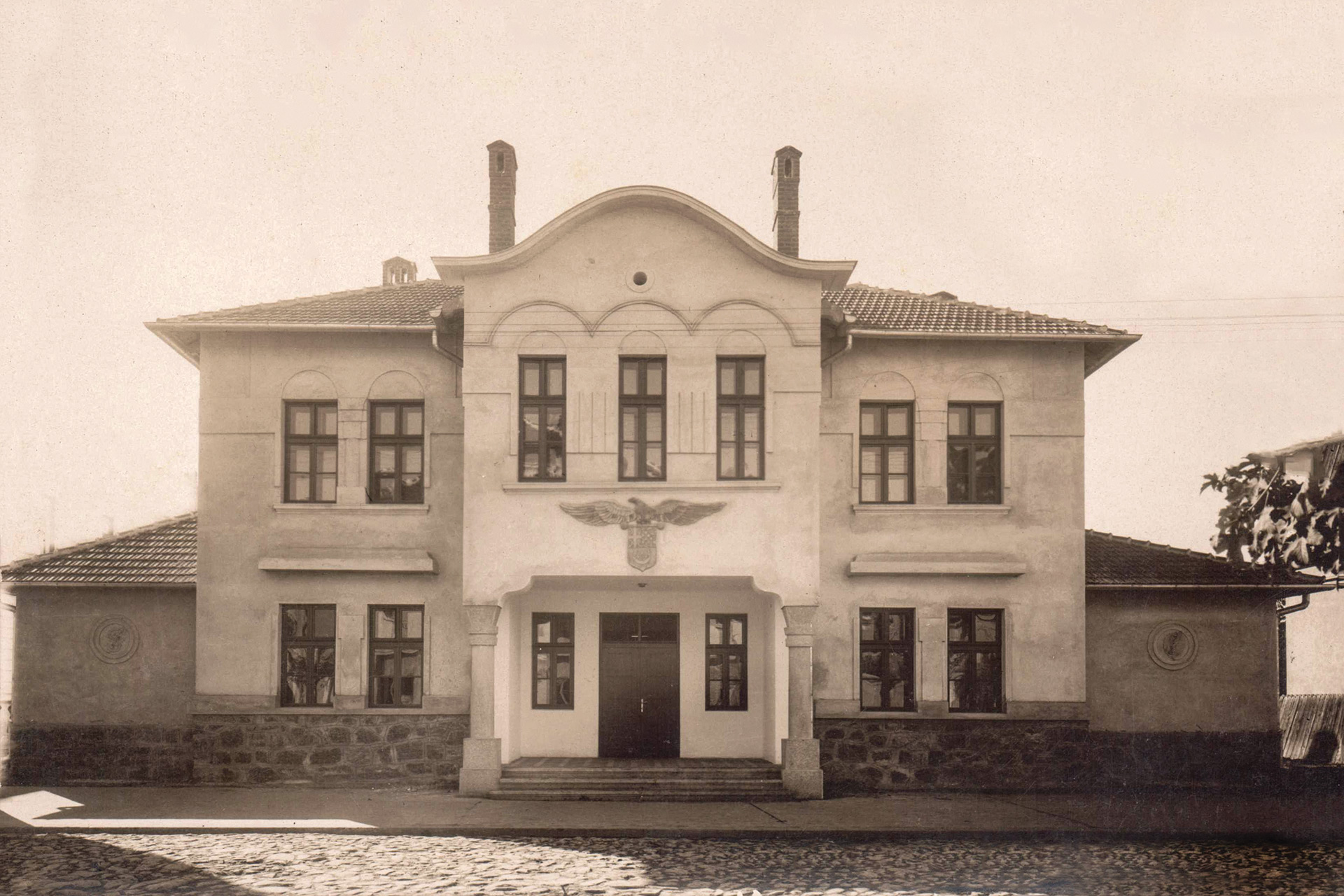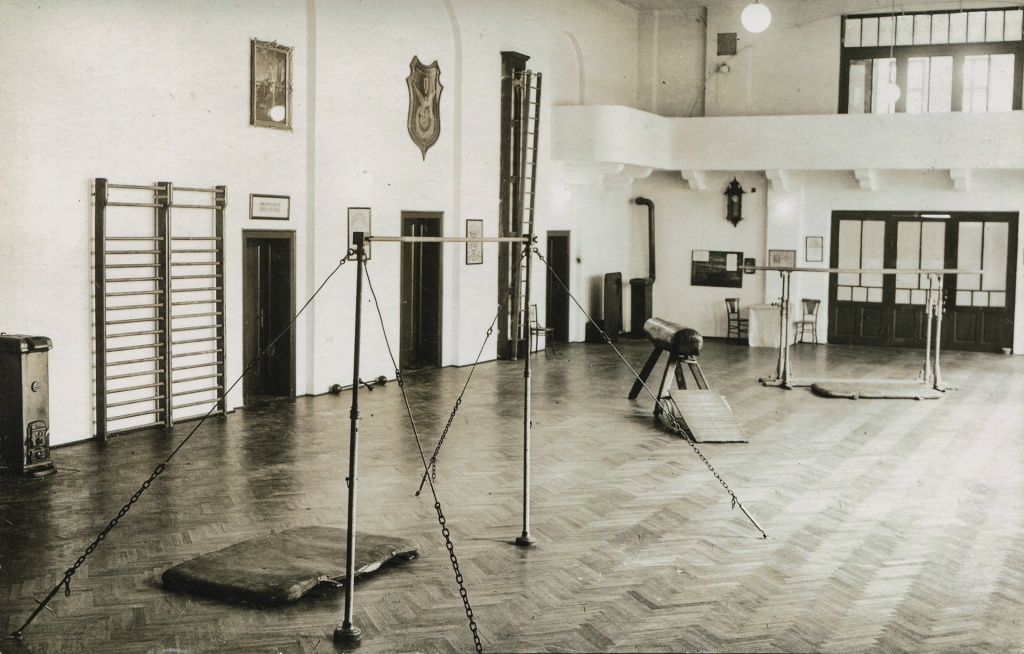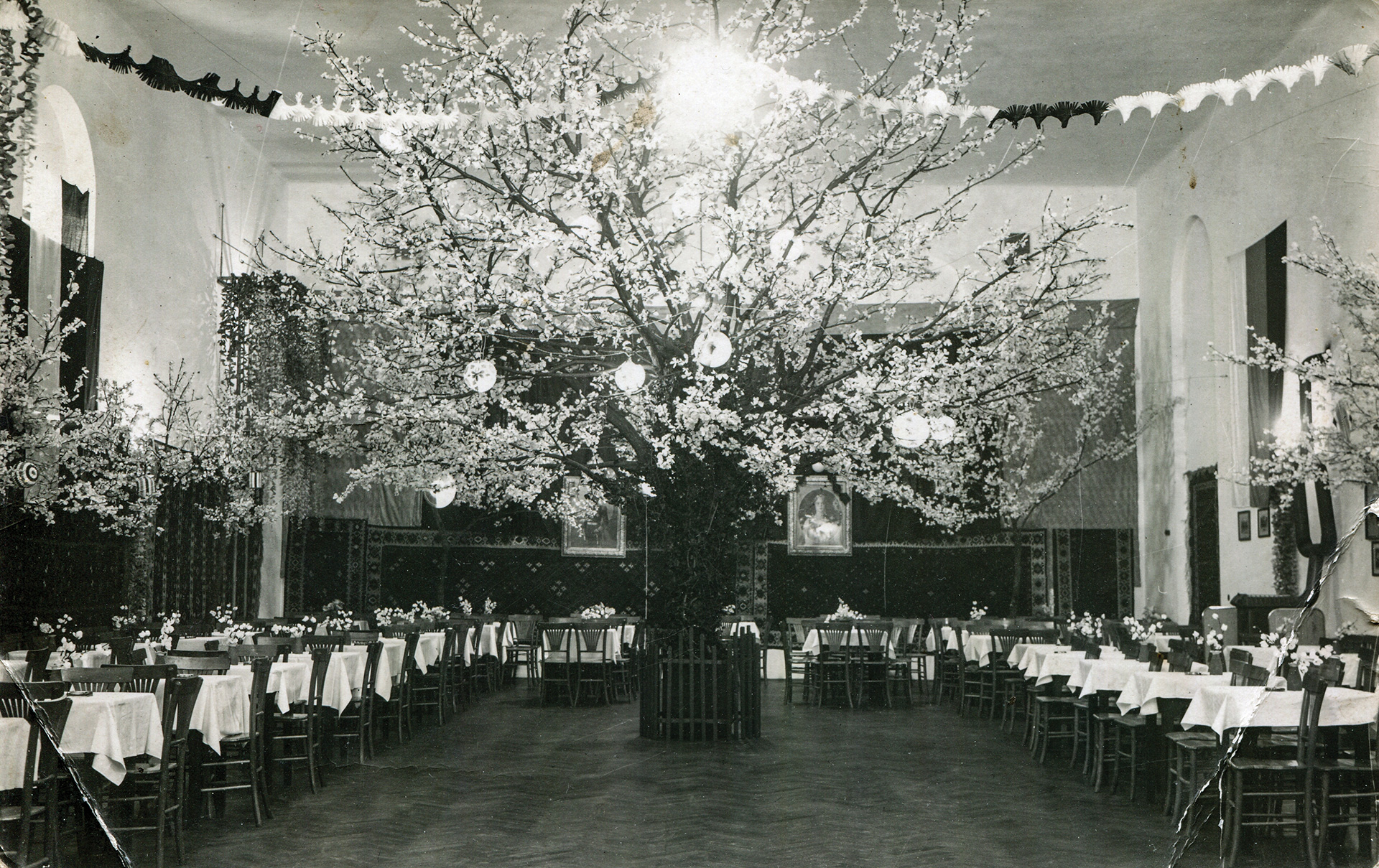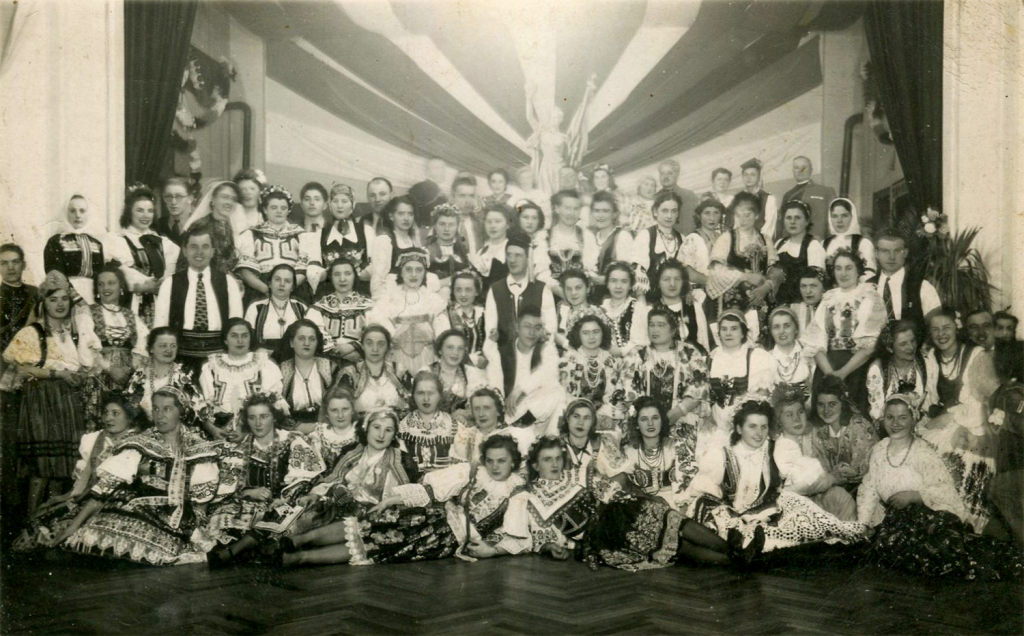From its founding in 1954 until 1979, the Regional Museum changed six locations. Today it is located in a building built in 1935 for the needs of the Sokol House. The Museum was given this building for use in 1979 and finally occupied it in 1981.
The Sokol House in Jagodina was built on the site of the house of Stevan Stevča Mihajlović (1806–1888), a prominent man from Jagodina but also an important figure in political life in Serbia during the reign of Prince Miloš and Prince Mihailo Obrenović. His house was built in 1859. At that time, it was a monumental building whose value was estimated at 6,000 ducats. It had a ground floor and a first floor, with five windows facing the street on both levels. Upstairs was a balcony with a wrought-iron railing. There was a brick fence on the left side of the house. This house was demolished in the early 1930s, and the plot was given to the Jagodina Sokol Society to build the Sokol House.
The Sokol movement was a special gymnastic system that originated in Prague in 1862, within the then Habsburg monarchy, in response to Slavic peoples’ germanization attempts. It was a combination of a sports organization and a national movement. It advocated liberalist philosophy and national identity strengthening through physical exercises, primarily gymnastics and athletics. It rested on the idea of creating a physically fit, honest, and nationally conscious individual who will have the strength to defend national interests and own cultural identity. Its goal was cultural and educational upliftment and moral education of the youth. The creator of this concept was Miroslav Tyrš, along with Jindřich Fügner and Emanuel Tonner, who named the movement. He suggested that the movement bear the Czech name “sokol” (falcon), as in folk songs, this bird was a synonym for heroic and noble. Falcon was also the ideal of strength, beauty, and fighting spirit, and also stands for a hero among all Slavs. Sokol’s ideas of freedom, brotherhood, unity, perseverance, and patriotism were accepted outside the Czech Republic, so it grew into a pan-Slavic movement.
In the newly established Kingdom of Serbs, Croats, and Slovenes (since 1929 the Kingdom of Yugoslavia), formed on December 1, 1918, the Sokol movement was one of the most critical pillars underpinning the ideology of Yugoslavia and the regime of King Alexander I Karađorđević. The period between the two world wars can be considered golden for the Sokol movement, as it had state support and peaked in popularity by becoming mainstream.
Jagodina Sokol Society developed from the “Dušan Silni” Gymnastic Society founded in 1906. With the formation of the state Association of Sokol Societies “Dušan Silni,” the Jagodina Gymnastics Society was also renamed “Dušan Silni” Sokol Society. However, its work was interrupted by the outbreak of the First World War, and its revival began in 1920. The society officially continued its work on January 27, 1921, when the first assembly was held, and the name was changed to Jagodina Sokol Society. During the fourth decade of the 20th century, the society began the construction of the Sokol House in Jagodina, which was completed in November 1935.
The designer of the Sokol House in Jagodina was architect Momir Korunović (1883–1969). This prominent Serbian artist of the first half of the 20th century was born in the village of Glogovac near Jagodina as the son of local priest Petar Korunović. He started attending grammar school in Jagodina and finished it in Belgrade, where he joined the Sokol society youth at the age of twelve, remaining its member for the rest of his life. Despite his father’s wanting him to professionally join the army, he enrolled in the Department of Architecture at the Technical Faculty of the Great School in Belgrade. He continued his studies in Prague, Rome, and Paris. The 20th-century history of Serbian architecture considers him one of the most significant and original creators. Apart from numerous sacral and secular buildings, he made plans for 25 Sokol houses in the entire Kingdom of Serbs, Croats, and Slovenes, i.e., the Kingdom of Yugoslavia, of which 16 were realized. Momir Korunović’s Sokol houses are considered the most significant achievements of Sokol architecture.
The building of the Jagodina Sokol House is one of Korunović’s more modest projects and smaller one-storey building. In the area behind the building, there was an open field for practice. Viewed through its social role, the central hall of Sokol House was a multifunctional space. It was a gym, theater hall, cinema hall and it was also used for performances, lectures, dances and concerts.
Following World War II, the Sokol House building in Jagodina was the residence of the “Partizan” Society for Physical Education, a kind of successor to the Sokol Society. In the post-war period, cinema and theater performances were held in this space. After the Regional Museum became its occupant, the building was declared a cultural monument in 1987 in the category of cultural property.







